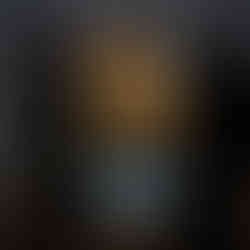
Children Of The Day, Josh Hagler at The Brand Library Art Center. Photo credit: Lorraine Heitzman.
Joshua Hagler, The River Lethe
at The Brand Library Art Center
Through August 24
By Lorraine Heitzman
In The River Lethe Joshua Hagler challenges the hubris that defined the exploration of the American West and Westward Expansion to conclude that grief is the cost of forgetting. His epic narratives, although partially obscured and deconstructed, are wonderfully adept at capturing the distance between memory and truth, with the belief that the truth, though often brutal and layered, is forged through a remembrance of our history.
The River Lethe, for which this show is named, has its origins in Greek mythology. It is a river in the Underworld that offers oblivion to those who drink its waters. Forgetting made rebirth possible but it was a destiny of blissful ignorance. Those who didn’t drink from the river were instead able to retain consciousness of their past. The myth of the River Lethe is a powerful metaphor for Hagler as he seeks to disavow romantic notions of the West, but it is his emotional and tactile connection to his materials that allow him to express his themes with such immediacy.
Hagler’s paintings and sculptural installations are resolutely dissonant. Some paintings look like film that was caught in a projector and began to burn. If that analog reference predates you, try to visualize a celluloid filmstrip melting; the image is faintly there, but almost all meaning is lost. Hagler’s paintings recall a similar dissolution, playing the distressed textures of the surfaces against the remnants of pictorial imagery. In this case the loss of imagery becomes part of the story itself. His fractured fairytales are puzzles and indictments all at once.
White Room Redroom is a massive, textural painting made by aggressively layering, dripping and peeling paint. The violent strata insinuate geological forces that overwhelm a faint Western landscape seen in the distance. The treatment of the surface contrasts with the placid scene beneath it, a commentary on the destruction and desecration of the land. The muscular painting is also the backdrop to Lethe, one of two installations in the show. In the middle of the main gallery, a crudely made canoe is suspended above the floor, each end tethered off to floating doors. Bones drift between the horsehide boat and the doors, finishing this ghostly, melancholic poem. The installation would benefit from an isolated, dedicated space, but even the lighting and placement can’t kill the beautifully staged set piece. Mother, Hagler’s other installation fares better in a more controlled environment, but almost all his work could use more room.
In The Devil in Tom Walker, Hagler references a Washington Irving short story that was later adapted by Stephen Vincent Benet to become The Devil and Daniel Webster. It tells the tale of a farmer who sells his soul to the Devil. The 1838 Charles Deas painting of the same subject is referenced too, but in Hagler’s hands it becomes a cautionary tale rather than the propaganda for American ideals as it was originally written.
Throughout The River Lethe Hagler creates worlds that are vulnerable and precarious. Danger and death, bones and decay are recurring motifs. Landscapes and people are subject to external threats and ignoring history can lead to ruin. A hopeful message is embodied in the myth of the River Lethe, however; that we can choose to improve upon the past. Luckily for us Hagler’s show is quite perfect just the way it is.
Check the Brand Library for additional related programs.
#losangeles #california #losangelesartist #art #painting #JoshuaHagler #losangelesart #contemporaryart #southerncalifornia #abstract #TheBrandLibraryArtsCenter #artgallery #TheBrandLibrary #gallery #artandcake #artopening #assemblage #artexhibition #installation #TheRiverLethe #ArtandCakeLA #fineart #artists #artist #mixedmedia #arts #artreview #artmagazine #ArtandCulture #exhibition #exhibit #lorraineheitzman
































